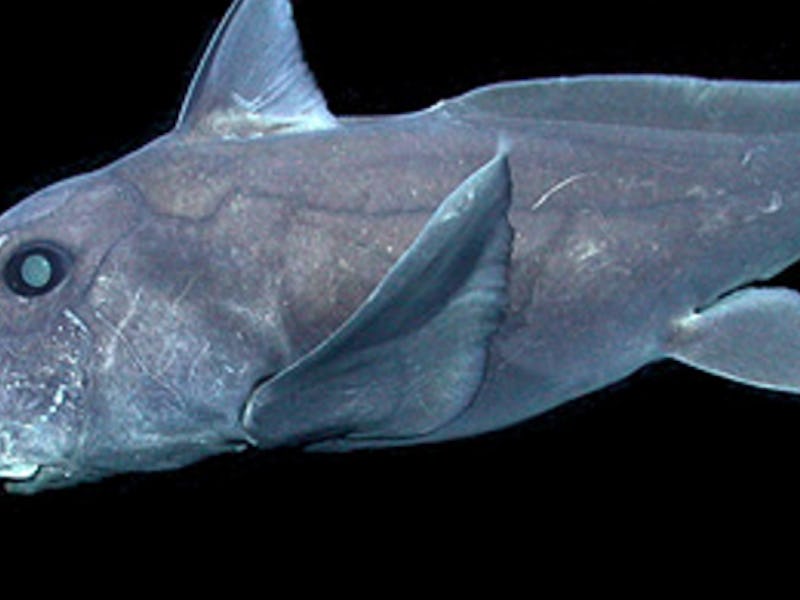Ghost Shark Captured on Camera Looks Like It Has a Dick On Its Head

While great white sharks steal Hollywood’s spotlight, ghost sharks lurk quietly at the bottom of the ocean with retractable penis-like appendages on their heads. Scientifically known as chimaeras, ghost sharks are strange-looking creatures that predate dinosaurs. They are also notoriously hard to track and capture on camera, but scientists have finally succeeded in doing so.
Recent footage has captured one species of chimaera — the pointy-nosed blue chimaera — for the very first time. When a team of geologists sent a remotely operated vehicle on deep sea dives off the coast of California and Hawaii, they accidentally captured footage of the ghost shark. An analysis of the animal, recently published in the journal Marine Biodiversity Records, revealed that it was indeed a pointy-nosed blue chimaera, but there was speculation about whether it was a new species. Its Latin name is Hydrolagus trolli, named for artist Ray Troll, an artist who often depicted fish in his work.
This means that this was not only the first time this fish has been caught on camera but also the first time it has been seen in the Northern hemisphere. The footage is now in the possession of the Monterey Bay Aquarium, which has uploaded it for everyone’s enjoyment:
The video also reveals some new information on this rarely studied species. In the background, you can see rocky outcrops, which suggests that these blue chimaeras prefer this habitat instead of the flat terrain where their peers typically lurk. It also gives an excellent look at the pattern of open channels on the chimaera’s head, which look like lines of spots up close. Technically called lateral line canals, these are sensory cells that help the ghost shark sense movement in the water, allowing them to find prey to munch on.
And then there’s the forehead penis: You can’t see it in the video, but it’s there. Resembling a “spiked club,” the retractable sex organ is thought to be used to stimulate a female or drag her over. But Douglas Long, who studies ghost sharks, tells National Geographic that we still don’t know enough about them to be sure.
Hydrolagus trolli was named after artist Ray Troll, who frequently depicted fish in his art. Here, the species' sex organ is shown.
What we do know is that they are a bit of a ham for the camera. Typically, deep sea creatures avoid ROVs and their bright lights. The Northern hemisphere pointy-nosed blue chimaeras, however, love them. “It’s almost a little comical,” David Ebert, program director at the Moss Landing Marine Laboratories, told National Geographic. “It would come up and bounce its nose off the lens and swim around and come back.”